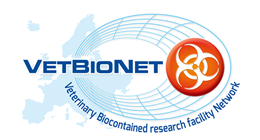UK Animals in Science Committee’s Report on Harm-Benefit Analysis
In November 2017, the UK’s National Committee for the Protection of Animals used for Scientific Purposes, the Animals in Science Committee (ASC), published a comprehensive review[1] of the harm-benefit analysis (HBA) which is used in evaluating animal research under the Animals (Scientific Procedures) Act 1986. The report was commissioned by the responsible Minister Norman Baker in 2014. To analyse the key issues, the ASC reviewed the following topics;
- Assessing harms experienced by animals
- Assessing cumulative suffering
- Strategies to minimise severe suffering
- Enhancing the evaluation and realisation of benefits
- Incorporating societal concerns.
The review provides a valuable examination of how the benefit side of the HBA is represented and assessed. The ASC recognises that assessing the true benefits of animal research is perhaps even more difficult than detailing the harms. The report considers opportunities to enhance the evaluation and realisation of benefits in HBA through; the use of systematic review, attention to experimental design, identifying benefits from basic research, considering different pathways to translational research and collaboratively evaluating the benefits associated with regulatory research and testing. In concluding about assessing and weighing benefits the ASC provide a list of questions that can be asked of scientific research to enhance the review of benefits and ensure they are more accurately and effectively weighed against harms. The report also identifies that understanding and incorporating societal concerns into the HBA is important and discusses the difficulties that arise when trying to do this and determining that further research needs to be done in this area.
The ASC concludes that HBA remains a legitimate ethical framework for evaluating the use of animals in research and testing. However, the report outlines 27 recommendations as to how the HBA can be improved now and in the future. The recommendations represent good practice already used by some of those involved in HBA and others present opportunities to reflect on and improve existing practice.
This review is part of ongoing efforts to make advances in our understanding of animal suffering both as a direct consequence of procedures and contingently due to factors such housing, husbandry and transport. The importance of the cumulative experience of the animals is also highlighted in this report with careful consideration of how to measure and apply it to the HBA. In addition to discussing how harms can be identified and assessed within the HBA the ASC also strongly advocates the adoption of strategies to minimise and eliminate severe suffering, in particular the RSPCA’s ‘Road map towards ending severe suffering’[2].
[1] Animals in Science Committee (2017) Review of harm-benefit analysis in the use of animals in research. Animals in Science Committee: UK, 88pp. Available at: https://www.gov.uk/government/publications/harm-benefit-analysis-animals-in-science-committee-review (accessed 5/4/18).
[2] Lilley E, Hawkins P and Jennings M (2014) A “road map” toward ending severe suffering of animals used in research and testing, ATLA, 42: 267-272.

